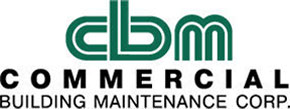Winter has a way of exposing every weakness in a building. What seems like a minor issue in mild weather—like a small leak, an aging furnace, or a clogged gutter—can become a major and expensive problem when temperatures plummet. Burst pipes, structural damage, and heating failures are all common winter disasters that can be avoided with the right preparation.
A little maintenance now can prevent massive repair bills later. Here’s how to get your building ready before winter hits.
Inspect and Reinforce Before the First Freeze
A building’s structure is its first line of defense against winter weather. Ice, snow, and freezing rain will find their way into any weak spots, causing damage that could have been prevented. A thorough inspection before the cold sets in can save thousands in repairs.
- Check the roof for vulnerabilities
Heavy snow and ice add weight and stress to the structure. Look for loose shingles, cracks, or weak spots. Clear gutters to prevent ice dams that can force water under roofing materials.
- Seal windows and doors
Gaps allow cold air in and warm air out, forcing heating systems to work harder. Adding weather stripping or caulk reduces drafts and lowers energy costs.
- Protect exposed pipes
Pipes in unheated areas like basements, crawl spaces, and exterior walls are prone to freezing. Insulating them prevents costly burst pipes and water damage.
Ensure Heating Systems Are Winter-Ready
Heating failures in winter aren’t just inconvenient—they can lead to extensive damage. A properly maintained heating system keeps the building comfortable and prevents frozen plumbing.
- Regular servicing improves efficiency and helps prevent sudden breakdowns. Replace air filters and check for leaks.
- Malfunctioning thermostats can lead to uneven heating, energy waste, or overworked systems.
- Ensuring heat circulates properly reduces strain on the system and improves overall performance.
Backup Power and Emergency Preparedness
Winter storms often cause power outages, which can shut down heating systems and create hazardous conditions inside the building. Having a backup plan in place prevents costly interruptions.
- Test backup generators. Ensure they are fueled and operational so they’re ready when needed.
- Stock emergency supplies. Keep extra fuel, batteries, and flashlights on hand for unexpected outages.
- Check sump pumps. If the building has a basement, make sure sump pumps are in working order to prevent flooding if snowmelt causes excess water buildup.
Plan for Snow and Ice Removal
A winter storm can turn walkways and parking areas into hazardous zones. Planning snow and ice removal in advance helps maintain safety and prevents last-minute scrambling.
Monitor walkways and driveways, and apply de-icing materials before storms to prevent ice buildup. Try to check for drainage issues, snowmelt should be directed away from the building to avoid water pooling and freezing near foundations.
Conclusion
Ignoring winter maintenance often leads to expensive repairs. A cracked foundation, a burst pipe, or a failed heating system can cost thousands of dollars to fix—not to mention the disruption it causes.
By taking simple preventive steps now, you can keep your building secure, efficient, and damage-free all winter long. The cold is coming, but with smart planning, you’ll be ready for whatever the season brings.

